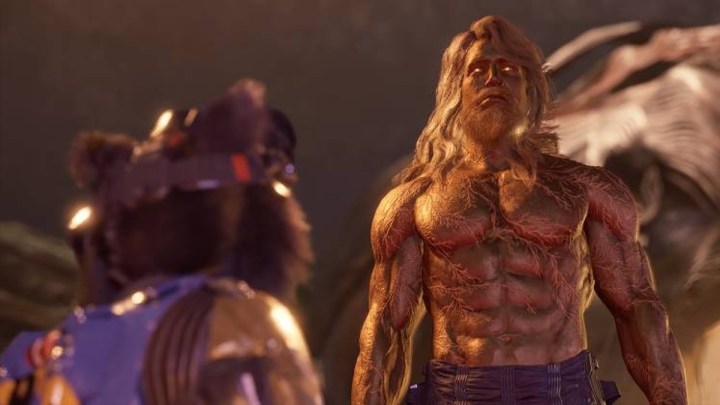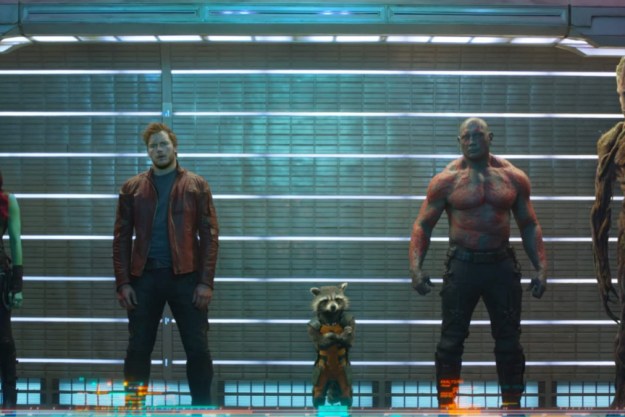Like many others this past weekend, I watched Guardians of the Galaxy Vol. 3, After being burned by Ant-Man and the Wasp: Quantumania, I was a bit hesitant to see the movie. With its Phase 5 movies and TV shows, Marvel has been dropping the ball in terms of delivering a satisfying time for its longtime fans. Even the good stuff, like Black Panther: Wakanda Forever, was depressing, acting more as a somber tribute above all else. So it was with a sigh of relief, and a bit of a surprise, that when Vol. 3 ended, I thought of two things: 1) the movie was good and 2) the 2021 video game was better.
- The video game has a better villain than Vol. 3’s campy High Evolutionary
- Adam Warlock actually kicks butt in the game
- The Guardians function more as a team in the game than in Vol. 3
- The game has a superior supporting cast (which includes an intergalactic llama!)
- Unlike Vol. 3’s oddly random soundtrack, the game has better songs that rock
This article isn’t to trash Vol. 3, which, at least to me, is one of the most satisfying Marvel movies in the uneven post-Endgame era. Yet as good as the movie is, I couldn’t help but be reminded about its video game cousin, Marvel’s Guardians of the Galaxy, and just how better it is at combing pitch-perfect characterization, a compelling plot, enthralling action sequences, and a kickass soundtrack to create an experience that is uniquely Guardians of the Galaxy. Hell, I’d go far as to claim that it is more true to the spirit of the original Guardians film than any of its sequels were. Here are five reasons why the video game is better and more fun than the movie.
Note: This article contains spoilers for Guardians of the Galaxy Vol. 3 and Marvel’s Guardians of the Galaxy.
The video game has a better villain than Vol. 3’s campy High Evolutionary

I’ve been reading Marvel Comics for a while now, and some of my favorites involve absolutely batshit stories from the 1970s and 1980s. A few of those involved the High Evolutionary, an imposing and menacing Darwinian genetic scientist who experimented on animals in Wundagore Mountain and caused all kinds of trouble for the Avengers. In Guardians of the Galaxy Vol. 3, the villain is reduced to a campy, scenery-chewing stereotype who is more annoying than threatening.
Marvel’s Guardians of the Game has a far better villain in the Magus, the dark side of Adam Warlock who manifests as a being of pure energy that, through a series of surprisingly easy-to-follow plot developments, tries to take over the universe via a religious cult called the Universal Church of Truth. There was a point in the final act of the game that I wondered out loud how the heck the Guardians could ever defeat such a foe; the Magus was that powerful, and that good of a villain. Plus, the game has the added bonus of numerous side villains like the Dweller-in-Darkness and Fing Fang Foom, who offer more of an interesting variety than Vol. 3‘s colorless Orgocorp goons.
Adam Warlock actually kicks butt in the game

Speaking of Adam Warlock, both the movie and the game use the longtime Marvel character in interesting ways. While I didn’t mind James Gunn making Warlock into a man-child who at first opposes the Guardians and then, in a post-credits scene at the end of Guardians of the Galaxy Vol. 3, joins them, I thought the video game was more faithful to the essence of the character, which is one that is inherently at war with itself.
Whereas Warlock in Vol. 3 feels more like a side character, the game’s Warlock is essential in figuring out what Magus wants and how to beat it. This Warlock doesn’t much care for the Guardians either, but he realizes he needs them to conquer his own evil self and save the universe. Plus, this Warlock truly does show off his power on a cosmic scale, while Will Poulter’s Adam is merely a swole space bro with a righteous golden tan.
The Guardians function more as a team in the game than in Vol. 3

As a single-player game, you’d think Marvel’s Guardians of the Galaxy would be at a disadvantage here. After all, you only technically control Star-Lord; the rest of the Guardians (Drax, Gamora, Rocket, Groot, Mantis, and Cosmo) are either controlled mostly by the computer or are NPCs you encounter along the way. (Editor’s note: you can control Drax, Gamora, Groot, and Rocket, but only for a limited time). Yet the video game is far more convincing in showing how the Guardians work as team, through combat, one-on-one intimate conversations, and casual banter, than Vol. 3 is throughout most of its 150-minute runtime.
For most of Vol. 3, the team is fractured. Rocket is largely immobile due to his injury, Gamora has no memory of her time with the team and thus acts like a hostile stranger, and Kraglin and Cosmo are left to guard Knowhere when the team ventures to Counter-Earth. As a result, the movie feels like a series of barely connected vignettes that involve duos (Star-Lord and Gamora, Drax and Mantis, Groot and Star-Lord, Nebula and Drax) rather than a fully realized ensemble piece. It’s only at the end, when all the Guardians team up to take down the High Evolutionary and his monster army, that we get to see them work as a team, but it’s too little, too late. The video game serves up the Marvel heroes as fighting, arguing, and caring for each other as a team right from the beginning, and creates a more convincing portrait of them as true “Guardians of the Galaxy” than the movie does.
The game has a superior supporting cast (which includes an intergalactic llama!)

If you’ve played the game and watched Vol. 3, you’ll know there’s no argument about this point: the game simply has a better non-Guardians supporting cast than the movie. Throughout the game, you’ll encounter colorful characters like Lady Hellbender, the self-proclaimed “Monster Queen” who is super-strong, possesses a menagerie of lethal pets, wields a mighty axe, and has a crush on Drax; Ko-Rel, a Nova Corps Centurion and Peter’s former lover; Ko-Rel’s daughter, Nikki, who Peter may or may not have fathered; and most importantly, an unnamed, orange-haired llama, who is adopted by the crew, is always in the way, and eats through everything … including the Milano itself!
Compare this cast to Vol. 3‘s bland Counter-Earth residents (did anyone care they were all nuked?) or the High Evolutionary’s equally bland henchman (ditto), and there’s no real contest. I will give the movie credit for introducing Rocket’s adorable and sympathetic animal crew featuring Lylla, Teefs, and Floor, who are each memorable in their own right, but that’s only three characters compared to the game’s dozen or so supporting players who each make their mark.
Unlike Vol. 3’s oddly random soundtrack, the game has better songs that rock
This is perhaps the most controversial claim and I may have already lost a friendship over it, but I can’t help but believe that the video game has a better soundtrack than Vol. 3‘s scattershot playlist. The movie begins with the rather somber Creep by Radiohead, which, while a great song, doesn’t really fit with the scene or the movie it’s played in. The Beastie Boys’ No Sleep to Brooklyn is used to great effect, but that’s the only song that really works. The rest feel like they are just thrown in there without any real consideration. Worst of all is Florence + the Machine’s Dogs Days Are Over, which overstays its welcome and is way too on the nose to really work.
Contrast Vol. 3‘s playlist with the game’s soundtrack, which features rock and pop hits from ’70s and ’80s like A Flock of Seagulls’ I Ran (So Far Away), Billy Idol’s White Wedding, and Europe’s The Final Countdown. Each song rocks on its own, but it’s the way they are used in the game that makes them so effective. Best of all is Mötley Crüe’s Kickstart My Heart, which plays when you infiltrate the Church’s headquarters and have to battle numerous possessed disciples. The sheer dopamine rush of the song, combined with the intense action on-screen, is exactly what you expect from a Guardians adventure: fast, fun, and furious, with ’80s hair metal music being the ideal soundtrack to the intergalactic chaos the Guardians frequently find themselves in. I never really got that from Vol. 3; instead, I got a bunch of songs that sound like leftovers from a jilted ex-lover’s sad mixtape.
Guardians of the Galaxy Vol. 3 is now playing in theaters. Marvel’s Guardians of the Galaxy is available to play on PlayStation 5, PlayStation 4, Xbox One, Xbox Series X, Xbox Series S, Nintendo Switch, and PC. Also check out DT’s articles on why the Guardians movies never needed the MCU to be successful and the best characters in Guardians of the Galaxy Vol. 3, ranked.
Editors' Recommendations
- Is James Gunn’s top 5 favorite comic book movies list accurate?
- Please, Marvel, don’t make a Guardians of the Galaxy Vol. 4
- The best characters in Guardians of the Galaxy Vol. 3, ranked
- Guardians of the Galaxy Vol. 3 introduces Marvel’s best villain since Thanos
- The best songs in the Guardians of the Galaxy movies, ranked



